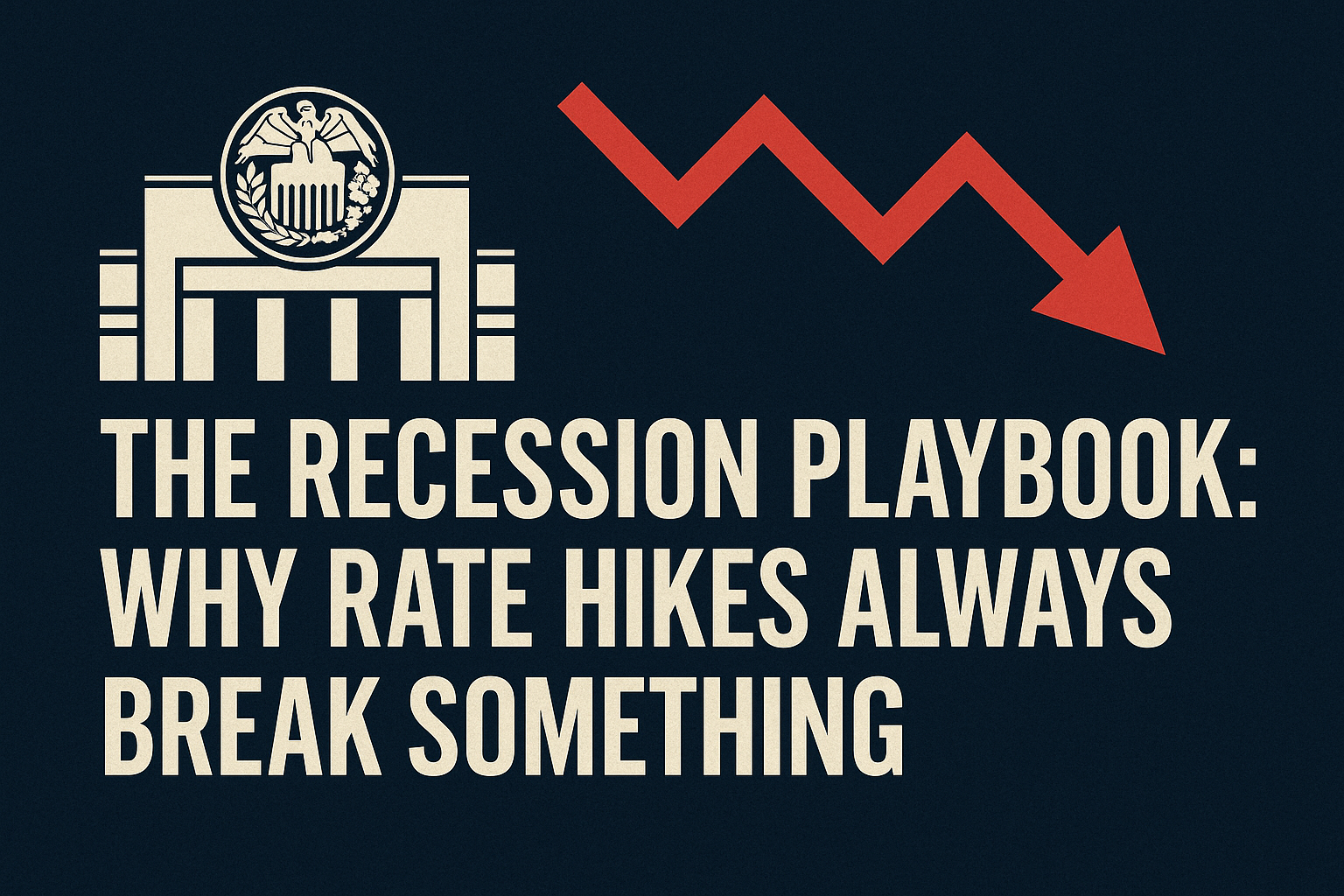The Recession Playbook: Why Rate Hikes Always Break Something (Part 2)
Written by Arbitrage • 2025-11-20 00:00:00

If you have not read yesterday's blog post, please read it before continuing here.
The Recession Playbook: How Tightening Cycles End
Every tightening cycle follows the same four stages.
Stage 1 - The Fed Hikes Aggressively: Inflation spikes. Policymakers initiate a series of rapid rate hikes to restore credibility and bring prices down. This is where the damage begins.
Stage 2 - Financial Conditions Snap: Higher rates quickly ripple through the economy.
- Mortgage rates surge
- Venture capital slows
- Corporate borrowing becomes more expensive
- Commercial real estate weakens
- Consumers cut spending
- The dollar strengthens, hurting exports
Credit-driven economies weaken when money becomes expensive.
Stage 3 - Something Breaks: The break is always different. In the 1980s it was the Savings and Loan crisis. In 2000 it was the dot-com bubble. In 2008 it was subprime mortgages and shadow banking. In 2018 it was the repo market. In 2023 it was Silicon Valley Bank and regional lenders. Rate hikes do not break the strongest parts of the system. They break the most fragile.
Stage 4 - The Fed Eventually Pivots: Once something breaks, the Fed reverses course. They cut rates, provide liquidity, and attempt to stabilize the system. But the pivot usually comes after fear and credit tightening have already begun. Markets often move months before the Fed does. Long-term yields fall in anticipation of recession and future rate cuts. At that point, the playbook is complete.
Why Rate Hikes So Often Trigger Recession
There are three fundamental reasons why tightening cycles reliably end in contraction.
- Rate hikes do not fix supply problems: When inflation is caused by supply issues, higher rates do nothing to solve them. The Fed cannot produce oil, build houses, or unclog shipping routes. It can only destroy demand.
- The Fed cannot control long-term rates: When investors expect a slowdown, they buy long-term bonds. This pushes yields down and inverts the curve. An inverted curve is a sign that credit creation is about to contract. Once it contracts, recession becomes likely.
- Tightening changes psychology before it changes the data: Business leaders slow down hiring. Consumers delay purchases. Lenders tighten standards. Everyone braces for weakness at the same time.
When confidence breaks, the economy follows.
What the Fed Can Actually Do
To understand the cycle, you need to understand the limits of monetary policy.
The Fed can:
- Raise or lower short-term rates
- Influence liquidity conditions
- Guide short-term expectations
- Make borrowing more expensive or cheaper
The Fed cannot:
- Control long-term yields
- Prevent a recession after the yield curve inverts
- Fix supply shortages
- Know what part of the system will break
- Eliminate the lag between tightening and impact
This mismatch between tools and outcomes is why recessions are not bugs in the system. They are features of how monetary policy works.
How Investors Should Use This Playbook
The key is to watch the signals that matter, not the commentary from policymakers.
- Follow the yield curve. Inversion begins the countdown.
- Track credit spreads. They widen before recessions start.
- Watch bank lending standards. When banks pull back, the economy slows.
- Pay attention to liquidity measures, not headlines.
- Understand that markets often bottom before the Fed pivots.
Investors who look at the right signals are almost always early. Those who listen to the wrong signals are often late.
Conclusion: The Cycle Never Changes
Rate hikes always break something because the US economy is built on leverage, liquidity, and confidence. When the price of money rises too quickly, one of those pillars inevitably cracks. The recession playbook has not changed in half a century. It remains the same because human behavior has not changed and because monetary tools have not evolved.
The pattern repeats in every cycle. Tighten. Lag. Break. Pivot. Recover. And then the next cycle begins. Understanding this rhythm does not prevent recessions. But it allows you to navigate them with clarity rather than confusion.